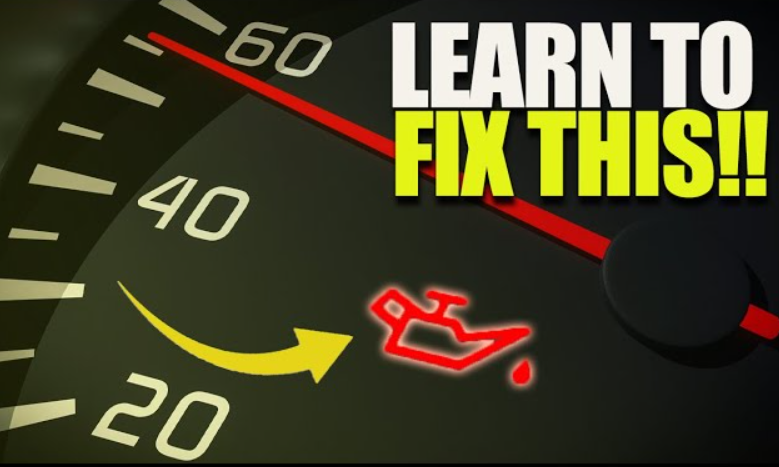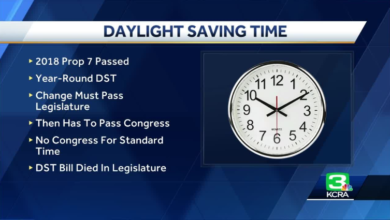Comprehending the Oil Light on Your Car: Signs and Solutions

Contents
- 1 Key Takeaways
- 2 Decoding the Oil Light: What Does It Mean for Your Car?
- 3 Troubleshooting 101: Common Causes for Oil Light Illumination
- 4 Regular Maintenance: Preventing the Oil Light from Coming On
- 5 When to Seek Professional Help: Understanding Serious Oil Light Warnings
- 6 Choosing the Right Oil: Does It Affect the Oil Light?
- 7 Navigating Oil Light Issues with Modern Technology
- 8 Insights from Experts: Debunking Myths About the Oil Light
- 9 Emergency Preparedness: What to Keep in Your Car in Case of Oil Issues
- 10 The Cost of Ignoring the Oil Light: Long-Term Risks and Repairs
- 11 Environmental Considerations: The Oil Change Process and Sustainability
Key Takeaways
- You are interpreting the oil light on your dashboard and understanding its importance.
- You are assessing the potential causes when your car’s oil light illuminates.
- The role of regular maintenance in preventing oil light issues.
- Learning when professional help is essential for oil-related warnings.
- You are choosing the correct oil for your vehicle to avoid false alerts.
- The impact of modern technology on oil management and monitoring.
- Expert insights on confronting common myths about the oil light.
- Emergency preparedness for oil-related incidents while on the road.
- The financial and mechanical repercussions of neglecting an oil light warning.
- Sustainable practices for oil changes and their environmental impact.
An illuminated oil light might not spell immediate disaster, but it is undoubtedly a sign not to be ignored. This simple indicator can provide crucial early warnings about the state of your vehicle’s engine and oil system. Understanding what the oil light means is the first step to keeping your car in good condition and avoiding expensive repairs. Dive into this comprehensive guide to decode the meanings behind the oil light, unearth common causes for its activation, and discover the best practices to address this vital dashboard signal.
Decoding the Oil Light: What Does It Mean for Your Car?
An illuminated oil light can send shivers down any driver’s spine. But don’t panic yet! While an activated oil light typically means an issue with your car’s lubrication system, understanding what the oil light means can help you determine the severity. Many variables can cause the light to turn on, including low oil pressure, which is detrimental to an engine’s health. A blip of the light, particularly during sharp turns or sudden stops, may indicate temporary fluctuations in oil pressure. However, if the light comes on and stays on, it’s a sign to immediately check your oil level, as your engine might not be getting the constant stream of oil it requires.
Interpreting this light correctly and promptly can save you from making damaging assumptions. Contrary to popular belief, the oil light does not necessarily mean you need more oil — it could indicate a severe issue, such as failing components inside the engine. It’s different from the check engine light, as it speaks specifically to the oil pressure rather than the broader engine diagnostics. Here’s the catch: ignoring this warning can cause significant harm to your engine, often requiring extensive repairs or even a complete replacement.
Troubleshooting 101: Common Causes for Oil Light Illumination
When faced with an illuminated oil light, several potential culprits can be to blame. Low engine oil levels are the most straightforward issue to identify and resolve; this involves adding more oil to your car. However, more severe problems like leaks or a malfunctioning oil pump can activate the light. These issues can lead to a failure to maintain the correct oil pressure, which is vital for properly lubricating engine components.
Another often overlooked cause is the oil’s viscosity. If it’s too thick, particularly in cold weather, or too thin, as can happen with overuse, the sensor may register incorrect pressure levels and cause the light to switch on. Regular checks are necessary to catch such anomalies early on and prevent the oil light from becoming a regular annoyance on your dashboard.
Regular Maintenance: Preventing the Oil Light from Coming On
Routine maintenance, including oil changes, is your first line of defence against any oil-related issues in your vehicle. The manufacturer’s scheduled service recommendations ensure that oil is replaced before it breaks down and can no longer do its job effectively. Your vehicle’s brand, model, style, and regular driving conditions affect these intervals. Delaying oil changes can lead to sludge build-up, decreased oil pressure, and, ultimately, trigger the dreaded oil light.
Regular maintenance is prudent for preventing the oil light from coming on and contributes significantly to your vehicle’s efficient operation and longevity. It’s better to stay ahead of maintenance rather than deal with the consequences of neglect, and regular oil checks should become as habitual as buckling your seatbelt before driving.
When to Seek Professional Help: Understanding Serious Oil Light Warnings
Sometimes, an oil light indication is beyond the remedial scope of a DIY fix. If the light stays on despite sufficient oil levels or comes on alongside unusual engine noises or performance issues, it’s imperative to seek expert evaluation immediately. Driving under such conditions might cause irreparable damage, the costs of which can escalate if not addressed in time. Trained technicians have the tools to diagnose the problem accurately and can ensure that your vehicle receives the appropriate service or repairs.
Prompt action can distinguish between a minor repair bill and a catastrophic engine failure. It’s advisable to err on the side of caution and get advice from an expert before proceeding with your travel when an oil light is flashing on the dashboard.
Choosing the Right Oil: Does It Affect the Oil Light?
Your choice of motor oil can influence the efficiency and health of your engine. Using the appropriate oil, as specified by your car’s manufacturer, ensures the engine components are adequately lubricated under various operating conditions. For instance, synthetic oils are designed to perform consistently over various temperatures, reducing the likelihood of false oil pressure readings that activate the oil light. Conversely, using the wrong type of oil can lead to incorrect oil pressure readings and potentially even engine damage.
It is also essential to consider the oil’s age and type. Over time, oil can degrade and acquire contaminants, losing its properties and leading to inefficient performance. Regularly scheduled oil changes, using the correct oil recommended for your specific engine, can thus help keep that pesky oil light off your dashboard.
The advance of automotive technology brings more innovative ways for drivers to monitor and manage vehicle health. Integrated onboard diagnostic systems (OBD-II) are now standard in most cars. They are critical in preemptively alerting drivers to potential oil issues before the oil light even has a chance to come on. These systems can provide detailed information on the condition of your oil and alert you when it’s time for a change or if there are fluctuations in oil pressure that need to be addressed.
Smartphone apps and other high-tech gadgets can also help demystify the oil light for the average car owner. This technology delivers data directly into the palms of drivers’ hands, making it possible to keep a virtual eye on your vehicle’s vital systems at all times. Leveraging tech tools in this way can help drivers avoid oil-related issues and ease the stress associated with car maintenance.
Insights from Experts: Debunking Myths About the Oil Light
Despite widespread car ownership, myths about vehicle maintenance, like those surrounding the oil light, persist. Some drivers believe ignoring the oil light is acceptable if their vehicle seems to run smoothly, but this couldn’t be further from the truth. Automotive experts unanimously agree that the oil light indicates a condition requiring immediate attention, whether simply adding more oil or a more complex engine diagnosis and repair.
Other myths, like the notion that all cars can withstand extended periods of oil changes, can give rise to a false sense of security and cause maintenance to be put off. Professionals emphasize the necessity of sticking to scheduled service intervals and paying heed to oil light warnings to ensure optimal vehicle performance. This expert advice is critical to debunking harmful myths and preventing potential damage to one’s car.
Emergency Preparedness: What to Keep in Your Car in Case of Oil Issues
You are experiencing an oil light warning while driving, which requires calm and immediate action. An in-car maintenance kit can provide temporary solutions and help prevent further damage until you can get your vehicle to a mechanic. This kit might include oil, a funnel, work gloves, and a flashlight, among other items. It’s a simple form of insurance against minor issues that can become major if not dealt with promptly.
Furthermore, possessing basic knowledge of your car’s operating systems and access to instructional resources on handling such alerts ensures you are prepared to address the warning signs and avoid panic. In fact, with the proper instructions, dealing with an oil-light situation can be a stress-free, straightforward process.
The Cost of Ignoring the Oil Light: Long-Term Risks and Repairs
Ignoring your car’s oil light is akin to neglecting a significant health warning—a costly mistake. An activated oil light signifies that your vehicle requires something as simple as additional oil or as substantial as a complete engine check-up. Continuing to drive without addressing the cause of the light could lead to extreme engine wear and, in the worst cases, a complete engine breakdown. These repairs come with hefty price tags and could have been easily avoided with timely intervention.
Analyzing historical data on engine failures reveals neglecting oil changes and oil light warnings as a common cause of costly repairs.
Environmental Considerations: The Oil Change Process and Sustainability
Every step in the oil change process must be executed with environmental considerations in mind. Oil disposal and recycling are not just legislative requirements; they form a moral obligation for every vehicle owner. Properly disposing of engine oil prevents the contamination of water sources and reduces the carbon footprint associated with vehicle maintenance. An eco-conscious approach to oil changes is a step towards responsible car ownership.
Advancements in automotive maintenance provide more eco-friendly oil disposal and recycling options. Knowledge platforms offer essential guidance on the environmental aspects of car maintenance, helping drivers contribute positively to the health of our planet by educating them on sustainable practices related to vehicle care.



